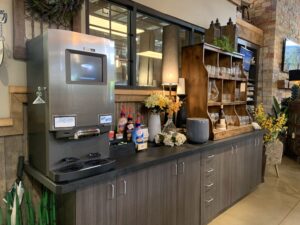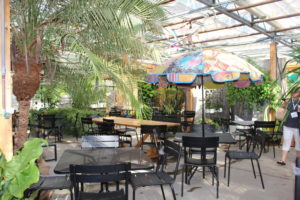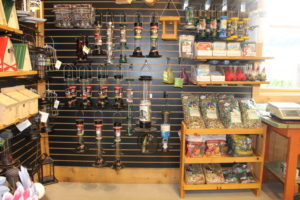The Fright or Fight Instinct
It’s no secret that 2008 is predicted to be a tough year for retailers as consumers deal with a lot of real and perceived economic uncertainties, all resulting in a depressed retail economy and fewer discretionary-spending dollars. The holiday shopping period has long been considered a harbinger of what’s in store for us in the spring and, with the lackluster holiday sales results just announced, we’re probably in for a wild ride. In times like this, retailers have two choices: hunker down and wait for the challenging times to pass while trying to cut costs to maintain some semblance of bottom line, or do something about it, acknowledging the challenge and becoming proactive.
Prepare for the Worst
Retailers are generally pretty good about planning their operations and programs to maximize growth, but rarely do they expend the same amount of time and effort in planning for the downturns. And when they do, it’s usually focused on cost cutting, trying to reduce overhead by slashing variable expenses. Controlling expenses in a challenging sales period is important, but it’s not necessarily the only thing to do, nor do across-the-board cuts usually make the most sense.
Just as important as cost controls is understanding the consumer psyche and behaviors as they traverse the economic minefield: They’re making hard decisions on where they will spend their limited dollars, and on what products or services. Rest assured, consumers will continue to spend even in the tumultuous times of 2008 but they will be much more diligent in their buying decisions, rewarding retailers who provide the best comparative shopping experience and value vis-à-vis all the other choices they have available to them.
In 2008, there will still be sales to be had and profits to be made. But more than ever, the consumer is in the driver’s seat, not the retailer. We must cater to their needs like never before or risk having them shop elsewhere. And if we chase them away or disappoint them, we may not quickly get them back when the economy strengthens and you attempt to regain your market share.
Plan the Best
So what are some of the key things to think about and plan for as we enter 2008?
Serve the customer better than ever before. The retailer that offers superior customer service will hold on to its shoppers better than those who do not. It may sound like an oxymoron saying that you should increase your labor-intensive customer service in the same breath as discussing cutting back on expenses, but what we’re really talking about here is the judicious review of expenses any cuts you make should be transparent to your customer. Some of your competitors most likely will panic, taking an ax to their payroll that will decrease or eliminate customer service, but you can make surgical incisions that won’t distract from the customer experience, if you plan the process.
Treat each customer as an individual. It’s a proven fact that today’s consumer is fed up with the lack of service in retail and other supposedly service-oriented companies. And they’re tired of being treated like just one of a herd. This will be magnified in 2008, when consumers take the time to really think about where they will shop before getting in their cars.
Use any and all available tools at your disposal to tailor the shopping experience to your customers; if you’re not able to do it for all of your customers, at least do it for the 25 percent of your customers who provide you with 60 percent of your sales and 75 percent of your profits! Targeted e-mail newsletters, loyalty cards, advance notice of training seminars, special shopping hours and free services such as potting up container gardens or foliage plants are all effective ways to accomplish this individualized shopping experience. And for these key customers, why not call them after they make a major purchase to see how things went and answer any questions they might have? After they pick themselves up off the floor because someone took a personal interest in them, you’ll be surprised at how many people they relate their service experience to; they’ll become your missionaries to new customers, the best advertising you can possibly have.
Customer loyalty is priceless. If you have a POS system, use it to capture each customer’s purchase behavior, then use it to help create the personalized relationship noted above.
Sell solutions, not just products. Providing solutions to your customer’s problems, needs and desires is, in my opinion, the most important differentiator between the independent garden center and the big box retailer. Consumers remember who helped them to be successful with the purchase and the project, who made them satisfied with the purchase and who made sure they purchased all the products necessary to successfully plant or install the products.
It’s easy to sell stuff at a price, but this will just force the customer to shop whoever has the lowest price that week. By selling solutions, you set yourself somewhat apart from your price competitor; price will still be a significant part of the purchase decision equation, but the service you provide is a powerful intangible benefit that can sway the purchase decision.
Enhance the shopping experience. When you look at expenses to cut, focus on the backroom costs, not the ones that will impact your customer. In fact, look for cost-effective ways to invest in improving your customers’ experience. Hot coffee in early spring, cold lemonade on hot summer days, a lending library of plant reference books, a photo garden tour conducted at your facility by the local garden club, or “how-to” sessions put on by your suppliers are all simple and inexpensive ways to enhance the experience and help build loyalty.
Become multifaceted. Touch your customers when it’s convenient for them, not convenient for you, by becoming more than just a brick-and-mortar retailer. Today’s customer does a lot of pre-purchase shopping on the Internet to learn about the retailer and product options they offer before they even leave home. And most consumers don’t shop our products by going from store to store; the retailer they select is generally the destination shop, and once inside your garden center, it’s your sale to lose. Make sure your website is an integral part of who you are and supports the image of your store; there shouldn’t be any confusion or disappointment if the customer checks you out on the Web and then goes to your store. Use your website to provide reference materials and Q&As to help your customers (and potential customers!) become successful with their purchases.
Stay Focused
Yes, it’s very possible that our industry’s sales may be somewhat stagnant because of our customers’ spending challenges. But that doesn’t mean that your sales have to be stagnant, too! By focusing on the customer and their experience, you have the opportunity to take market share away from competitors who are hunkering down and cutting costs without a plan. And by building share and your customer base in tough times, you’ll benefit exponentially when the economy turns the corner and spending goes back up.
Simply stated, your options are to hunker down and ride out the temporary crisis or get aggressive. It’s your choice.


















 Videos
Videos





